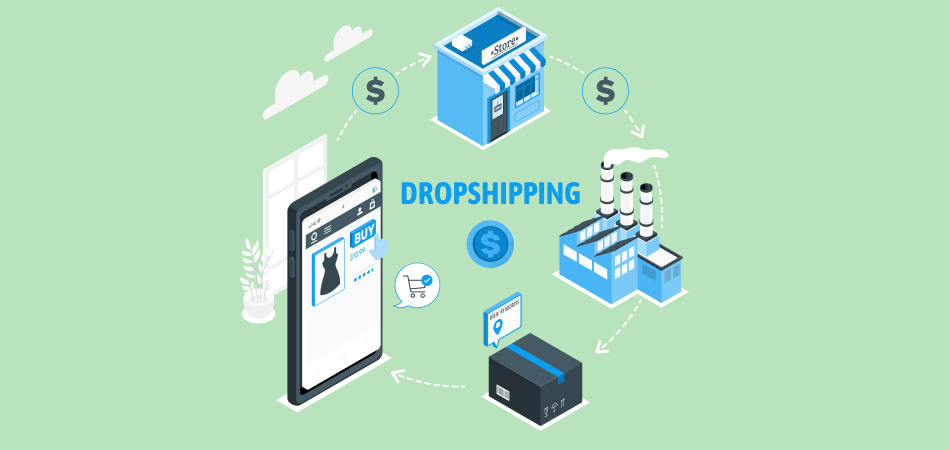How Many eCommerce Types Are There? The Basics of eCommerce

Innovative ecommerce enterprises have revolutionised our shopping habits and redefined what is possible. Ecommerce accounted for 6% of retail sales in the United States in 2013, and analysts project that by 2025, ecommerce sales will account for roughly 22% of all purchases in the United States. e-Commerce is a business concept that lets businesses and customers buy and sell products online.
There are several ecommerce business models to select from, and it is now simpler than ever for creative founders to use them to turn their ideas into reality.
When it comes to innovating and defying expectations — and you want to stand out from the crowd online — you'll need to understand which business model can benefit you the most and how you can leverage that into more success.
Precisely, e-Commerce is an online commercial transaction between a supplier and a client. However, while this theory is correct, we may be more particular and classify e-commerce into six broad groups, each with unique features.
Top 6 Fundamental Types of E-Commerce
If you're launching an ecommerce firm, you'll almost certainly fall into one of these four broad groups. Each has advantages and disadvantages, and many businesses operate in more than one. Knowing which bucket your concept belongs to might help you think imaginatively about your possibilities and risks.
- Business-to-Business (B2B)
- Business-to-Consumer (B2C)
- Consumer-to-Consumer (C2C)
- Consumer-to-Business (C2B).
- Business-to-Administration (B2A)
- Consumer-to-Administration (C2A)
Let's go through the different sorts of e-commerce one by one, using examples to help you understand them better.
1. Business-to-Business (B2B)
A business that offers its goods or services to another business is popularly known as a B2B business model. Current B2B entrepreneurs have carved out a niche for themselves by eschewing order forms and catalogues in favour of e-commerce sites and better specialised market targeting.
| Get Started Now to Grow Your Online Business with the Best AliExpress Dropshipping Tool - DSers! |
Millennials made up 60% of B2B purchasers in 2021, an almost twofold increase from 2012. B2B selling online is growing increasingly crucial as younger generations reach the age of commercial interactions.
2. Business-to-Consumer (B2C)
The formation of electronic commercial interactions between enterprises and ultimate customers distinguishes Business-to-Consumer e-commerce. It refers to the retail part of e-commerce, which is where conventional retail trading generally takes place.
The formation of electronic commercial interactions between enterprises and ultimate customers distinguishes Business-to-Consumer e-commerce. It refers to the retail part of e-commerce, which is where conventional retail trading generally takes place.
| Get Started Now to Grow Your Online Business with the Best AliExpress Dropshipping Tool - DSers! |
These kinds of relationships can be simpler and more active, but they can also be sporadic or terminated. Because of the Internet, this sort of commerce has grown significantly, and there are now numerous online stores and malls available on the Internet that offer a wide range of consumer items, including computers, software, books, shoes, vehicles, food, financial products, digital magazines, and so on.
Sites where designers provide multiple options for a corporate logo and only one is chosen and effectively purchased, are examples of such activities. Another popular portal in this sort of trade is iStockphoto, which sells royalty-free pictures, images, videos, and design components.
3. Consumer-to-Consumer (C2C)
Customers sell goods or services to other customers online under the C2C type. People employ a third-party company to post sales adverts and communicate with prospective customers (an ecommerce website or an online marketplace). Two well-known suppliers of C2C e-Commerce are Amazon and eBay.
4. Consumer-to-Business (C2B)
In the C2B model, independent contractors or business owners provide corporations with goods or services. For instance:
- Developing a website for a business as a web designer
- Photographer creating images for goods catalogues
- Caterer who works at conferences, business meetings, and corporate events.
Individuals may (and should) use a variety of marketing strategies to effectively advertise their services, such as using job boards and social media to increase their online visibility and an ecommerce website to display their portfolio and gather consumer reviews.
5. Administration-to-Business (B2A)
This category of e-commerce includes all online transactions between businesses and government agencies. This is a vast and diverse range of services, notably in fiscal, social security, employment, legal papers and registries, and so on. With expenditures in e-government, these sorts of services have grown significantly in recent years.
6. Consumer-to-Administration (C2A)
The Consumer-to-Administration model includes all electronic interactions between people and government agencies.
Applications Are:
- Disseminating knowledge, distant learning, and other forms of education
- Social Security - through disseminating information, providing payments, and so forth.
- Taxes - submitting tax returns, making payments, and so forth.
- Appointments, disease information, payment for health treatments, and so forth.
Both public administration models (B2A and C2A) are firmly related to the notion of efficiency and ease of use of government services offered to citizens via the use of information and communication technology.
Benefits of E-Commerce
The primary benefit of e-commerce is its capacity to access a worldwide market without requiring a huge financial commitment. The geographical boundaries of this style of commerce are not specified, allowing customers to make a worldwide decision, receive relevant information, and compare offers from all possible providers, regardless of their location.
Another significant benefit commonly connected with electronic commerce is cost savings. The more simple a business process is, the more likely it is to succeed, resulting in huge savings in transaction costs and, of course, in customer pricing.
Drawbacks of e-Commerce
Lack of security and dependability leads eCommerce to improper implementation, making it the biggest drawbacks of e-commerce. The second element is user reluctance since most individuals are reluctant to buy something without first trying it out or holding it in their hands. Moreover, here is the list of primary downsides of e-commerce:
- Substantial reliance on information and communication technology (ICT);
- Inadequate laws to control emerging e-commerce operations, both domestically and globally;
- The loss of users' privacy, as well as the cultural and economic identity of regions and countries;
- Uncertainty in doing commercial internet transactions.
Final Words
The ecommerce market has grown in popularity and innovation in recent years.
Having in-depth knowledge regarding what business models to use and how to use them for the immense growth of your business means the difference between a successful business and one you never hear about again for companies looking to take the next step into the digital world.
You won't have to worry about the second option if you visit DSers. Their solution is intended to assist businesses in building, innovating, and growing — without the hassle and with the assistance of industry experts.













 Company
Company
 Why Choose DSers
Why Choose DSers
 Blog
Blog
 Help Center
Help Center



